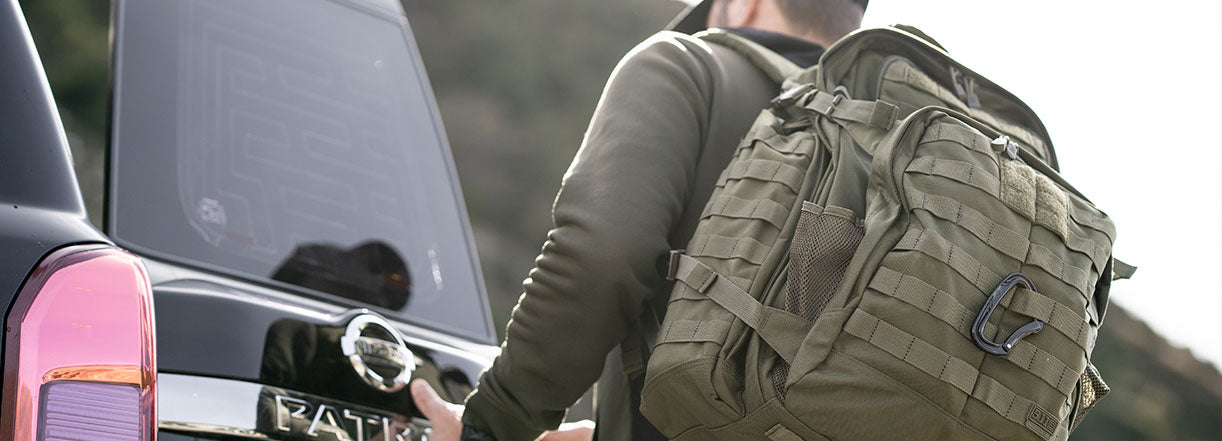A bug out bag is basically a survival kit that should contain all necessary tools and supplies that you may require to "bug out" of a serious situation. Some may call it a "go bag" and others may simply refer to it as an emergency kit, but at it's core, it's designed to contain everything you may need to survive after you escape.
We're not going to focus on the average survival gear list that looks like the family camping trip to the lake in our bug out bag guide. We're going to focus on the elevated threat levels in 2025 with a contentious election approaching, state sponsored sabotage here at home, and a divided nation where your neighbor may not be as friendly as you would have hoped.
From a basic flashlight to a full list of survival tools, we'll cover all the bug out bag list essentials to ensure that you're ready for any situation that may arise.
Addressing The Basic Survival Kit Mask On And Bugout The Ever Essential Bug Out Filter The Best Full Body Bug Out Protection Threat Detection Checklist Next-Gen Bug Out Bag Build Survival Gear The Bottom LineTable of Contents
Addressing The Basic Survival Kit
Despite this article focusing on the elevated threat level we face in 2025, we'd be remiss if we didn't at least mention the basics. You're ahead of the curve if you bug out with a gas mask and level IV armor plates. However, if you live in Montana in the winter and you forgot to bring your sleeping bag, it's going to be a long 72 hours before you make it back home.
The checklist below is fairly comprehensive and covers things like water, food, sleeping bags, first aid kit, and most items you need to cover your basic emergency situation. In many ways, it does resemble your average family camping list minus the S'mores and hot dogs.
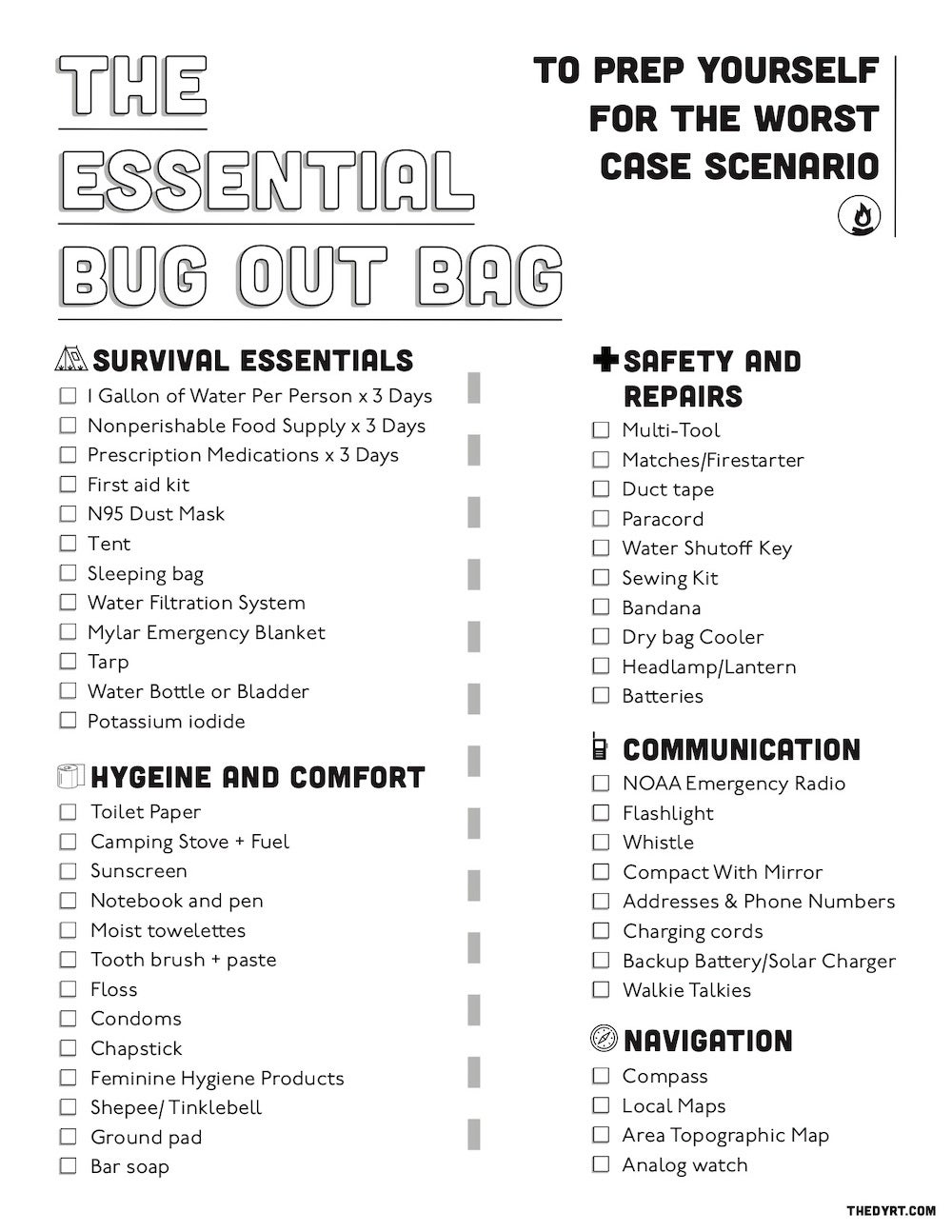
A great checklist for bug out bag essentials. (Image courtesy of The Dyrt)
As you can tell, a good bug-out bag should equip you to handle any survival situation that may arise. This goes without saying, but you should avoid putting your stuff in a flimsy trash bag if you're preparing for a bug out situation. Instead, we recommend you invest in a reliable bag kit that has adequate space, since this'll be your compact survival kit.
Here at MIRA Safety, we focus more on the PPE portion of emergency preparedness, and we highly recommend that your complete bug out bag has PPE . When building a bug out bag, it's important to mention that many of the items would be similar to a CBRN go bag, though you'll have to prepare for any situation, such as wilderness survival or the extreme cold.
For instance, you won't put a fishing kit in your go bag, but you should absolutely consider keeping one. Remember, if you need a bug out bag survival kit, you also need to be prepared to live in any situation. Serious survival skills will go a long way in keeping you safe.
Mask On And Bugout
Respirators and gas masks are a crucial component of any bug out bag in 2025 and we have the war in Ukraine to thank for that. Across Europe and the United States, we are seeing industrial sabotage popping up at an alarming rate. Hybrid warfare seems to be the order of the day as chemical plants and munitions factories are suddenly catching on fire.
We're not asking you to throw a gas mask into your survival bag because we think that a foreign enemy is going to rain mustard gas down upon your family picnic. Rather, they just need to let a train full of toxic chemicals derail and the outcome will be the same. From basic bag items like a survival knife to dried snacks, every bug out bag should have masks too.
If you're in the market for a reliable respirator that can keep you safe, the CM-8M is everything you need.
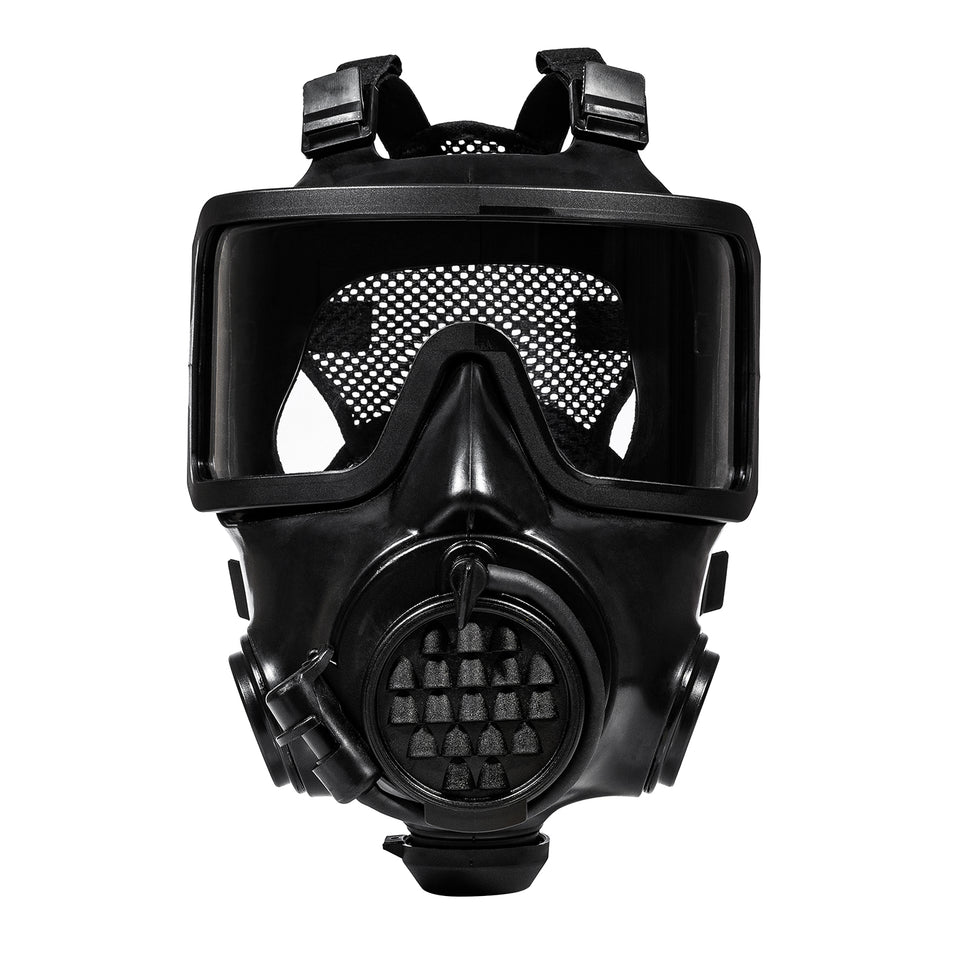
The CM-8M essentially combines the best of both worlds, giving you an even wider range of vision than the CM-6M combined with the optics/rifle compatibility of the tactical CM-7M mask. It’s the first completely original gas mask design we’ve ever deployed, and it’s already getting rave reviews from users in the field.
As if foreign sabotage were not enough for us to face in 2025, we are also looking at a period of unprecedented political unrest. In 2016 and 2020, there were countless incidents recorded of incident civilians driving by when they stumbled upon an unruly mob facing off with law enforcement. Again, chemical crowd control as been used by both law enforcement and unruly agitators to control the conflict zone and there is every reason to believe that we are going to see more of that in 2025.
If your packed bag is full of survival gear and equipment, we do have an option that you can keep on you in your mobile get home bag for such scenarios. If you need something smaller for a basic bug out bag kit, there’s the Tactical Air-Purifying Respirator (TAPR).
But since the TAPR is a half-mask, it won’t protect your eyes or the upper part of your face like a traditional gas mask. As such, it’s more ideal for purse/satchel carry. For duffle bags or other big bags, we recommend going with a full-sized mask as a part of your preparedness kit. A TAPR would also be great as a backup respirator if you have the room for it.
The Ever Essential Bug Out Filter
Whichever mask you choose, the reality is that the mask is only as good as the filter that is between you and the toxic air. Plus, you should have absolute faith that your mask will protect you.
During Marine Corps recruit training, recruits are taken into a chamber filled with CS gas while wearing gas masks. They are then asked to take off those masks and breath the air where a copious amount of vomiting and snot ensues. They are then asked to put back on the mask, clear the air inside, and begin to breathe normally again.
This is done to give the Marines the confidence in a fight that the masks work. When the dreaded "gas, gas, gas" warning is called out, those in a conflict zone do not have time to wonder if what they are about to try will work. It's eyes on the target, mind in the fight, and carry on with the mission.
The VK-530 gas mask filter has been one of MIRA Safety’s best-selling new products, and for good reason.
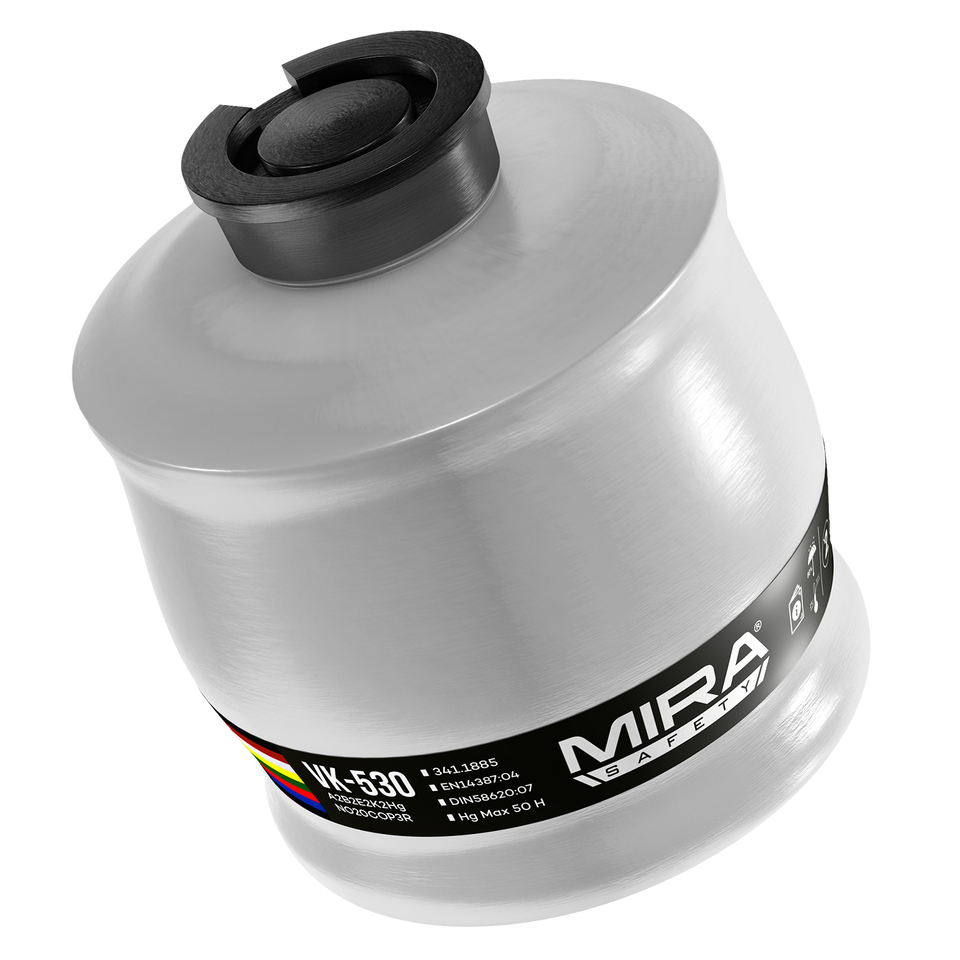
In addition to protecting you from a wide range of toxic industrial chemicals, smoke, and particulates, the VK-530 can also filter out smoke and carbon monoxide—effectively allowing your gas mask to do double-duty as a smoke hood.
The NBC-17 SOF offers protection from low concentrations of common CBRN threats, all in a compact package that can tuck into a side pouch of your bug out bag. These filters use the same 40mm NATO standard interface as all the rest, so they’ll work with your MIRA Safety mask just fine.
We still recommend the NBC-77 SOF as the best filter when you’re dealing with unknown threats and are packing your emergency essentials. It’s rated for high concentrations and comes with a completely unrivaled twenty-year shelf life, so it’s an outstanding investment in personal protection.
The Best Full Body Bug Out Protection
We realize that disaster and crisis preparation exists on a continuum. All should prepare, which is why, when you build your own bag, you'll notice that the list of items is tailored to specific needs. Some want a basic 72 hour kit, while others need a kit that covers different survival items to last for much longer in unknown environments.
There are those who unfortunately think the government has the answer in every disaster and will be there to protect them. Then, there is the ultimate survival enthusiast who is ready to live off of the grid in perpetuity. Thus, the list is not one size fits all. Depending on your bug out plan, you'll want to check what you put on the list.
Survival experts will always argue over the right level of preparation, but what is beyond dispute is that a full body protective suit should absolutely be on your bug out bag checklist. If you have the new MIRA Safety MOPP Suit in your backpack, you'll be as ready to face even the worst of scenarios.
In reality, you'll be ahead of the Marines as those suits were engineered using impermeable fabric. It’s a critical part of the way these suits work, since they’re impermeable to CBRN threats. But they’re also impermeable to air.
As a result, wearing a traditional impermeable hazmat suit for longer periods of time can be difficult depending on the environment. If it’s an especially hot day, you might experience a small greenhouse effect within your suit, leading to rapid fatigue and dehydration.
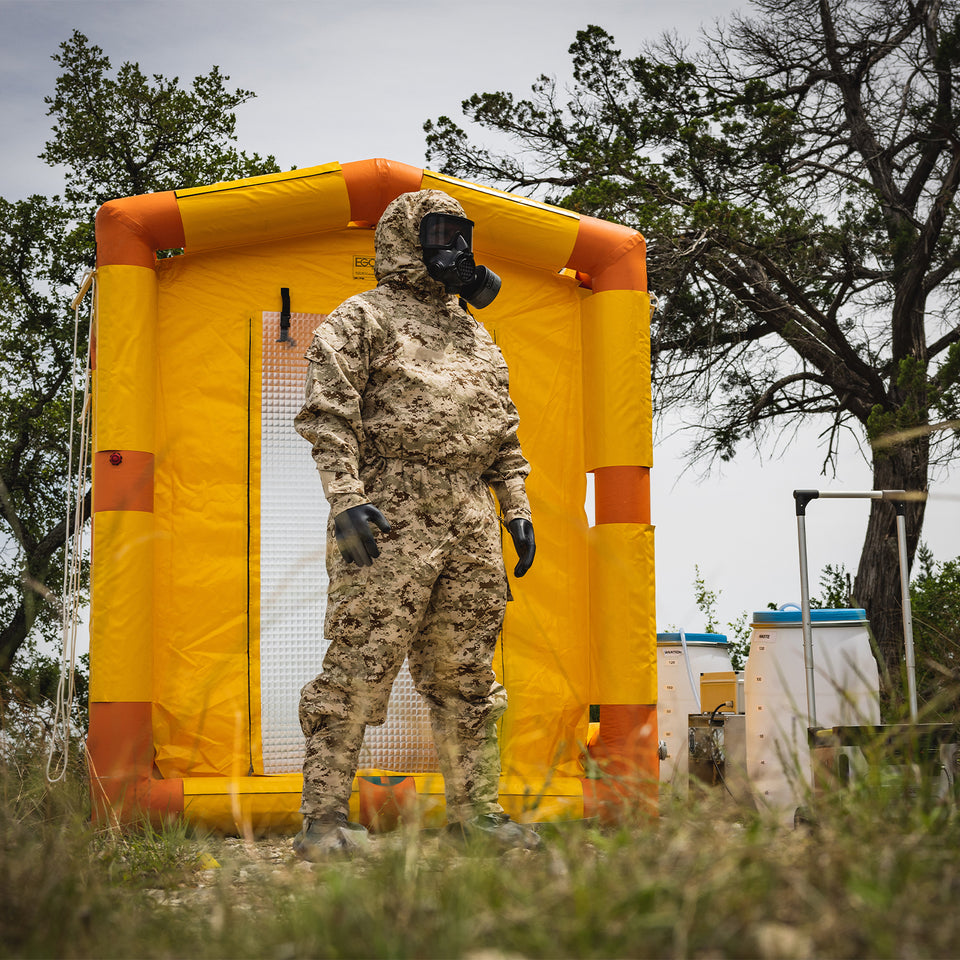
The MIRA Safety MOPP Suit was constructed using what’s called “semi-permeable” fabric, which allows some small amount of air through the suit while keeping CBRN threats out. Designed for the perfect bug out bag, it can easily be folded to make it an integral part of your urban survival package.
If that seems a bit much for your bugout bag, our M4 CBRN Poncho is another recommended addition for full-body protection. The M4 looks like any standard poncho, but it’s constructed using a unique tear-resistant fabric that can provide protection from even the most toxic CBRN threats.
Threat Detection Checklist
One of the best additions that you can make to your survival system kit is a threat detection tool like a dosimeter. Radioactivity is silent, but extremely deadly, and one of the best survival tips that we can give you is to ensure that your kit includes threat detection systems such as these.
First, let's take a look at the Geiger-2 dosimeter.
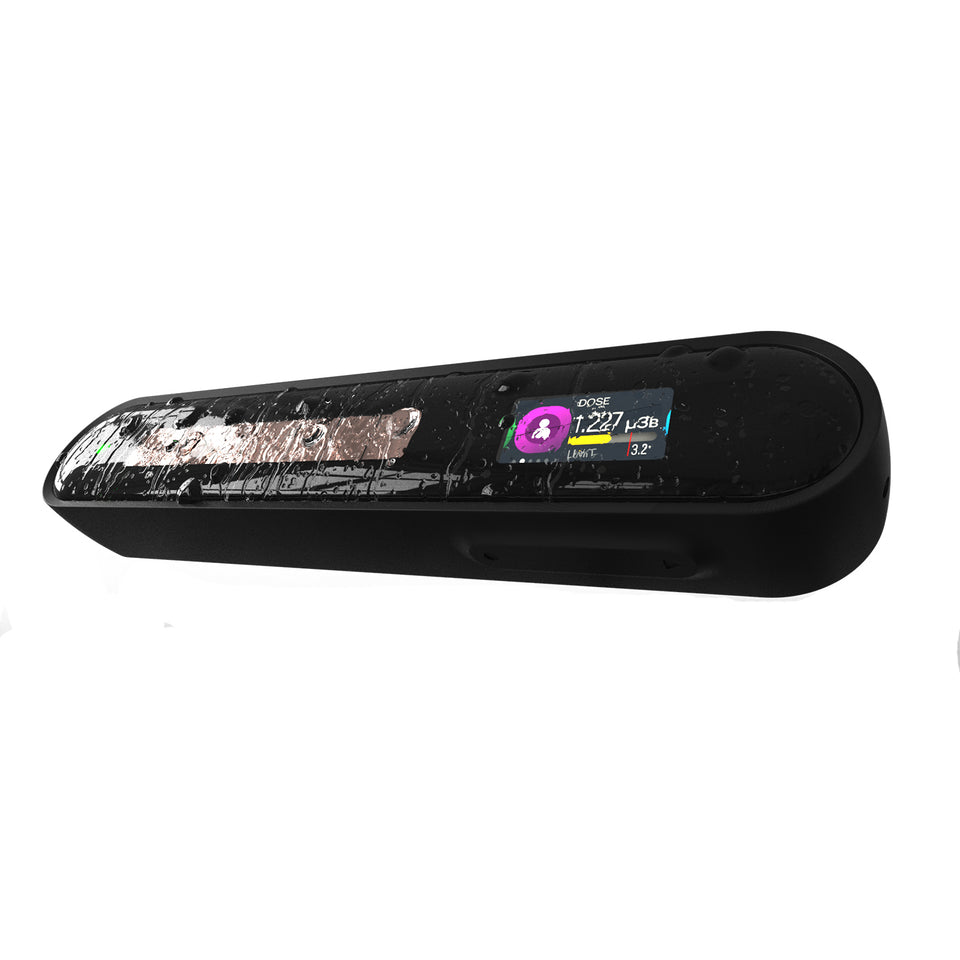
The Geiger-2 starts with the proven SBM-20-1 Geiger Muller tube used by military Geiger counters for decades. Then it adds a microprocessor with a color LCD screen, giving you “iPhone”-style functionality and access to a wide range of tracking features, alarms, and data on exposure.
The Geiger-2 is sensitive enough to detect even background radiation, and it’s powered by a rechargeable integrated battery (with supplementary solar power).
Meanwhile, the new DETEHIT CWD-3 Nerve Agent Detection Strips can be used to detect nerve agents in the atmosphere in a matter of seconds. Simply expose the strip and wait for a reaction to gauge the presence and concentration of deadly nerve agents.
The same CWD-3 strips can also be used to ensure you’ve been successfully decontaminated before removing your PPE.
Finally, there’s the CWD-1 CBRN Detection Paper.
As the name implies, CWD-1 is similar to CWD-3. But CWD-1 testing paper can distinguish the difference between three different families of nerve agents including G agents (sarin, soman, tabun), V agents (VX Gas), and H agents (blister agents like mustard gas) in liquid form.
Next-Gen Bug Out Bag Build Survival Gear
As you can see, the purpose of this article was to help you consider moving beyond your standard thermal sleeping bag and first aid kit. We just do not believe that such a kit would suffice given the threats we face in 2025. It is a new generation of threats that will require a new generation of emergency supplies.
With a VK-530 gas mask filter, you get instant protection from smoke inhalation, adding a whole new dimension to your PPE. With a PAPR, you can enhance your range on foot or make it possible for someone to wear a mask when they otherwise couldn’t.
A MOPP Suit will also take you further than you’d get otherwise, and the right detection gear can make all the difference when you’re navigating the aftermath of a disaster or a terrorist attack.
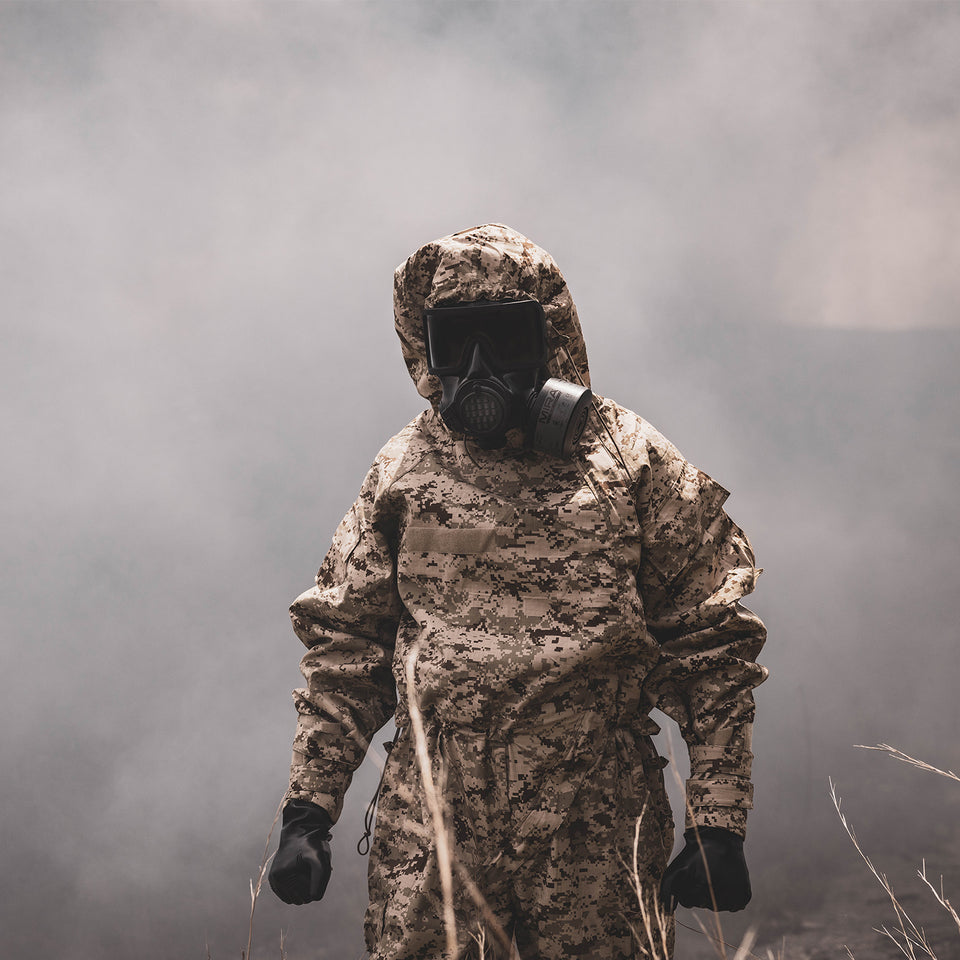
Most of these upgrades would only replace existing gear or take up minimal extra space. So you’d still have plenty of room for food, a bag for water, first aid, and other essentials. There’s practically zero downside.
Armor plating, on the other hand, is an upgrade where you’ll have to weigh (pun intended) the costs vs. the benefit. An extra 6 lbs. isn’t too much, but if it makes you want to leave your bug out bag at home then you should probably skip it.
The Bottom Line
At the end of the day, there are many bug out bags, but this one will be yours. You must master the contents of the bag as you must master your life. In an emergency situation, your bag without you is useless. In that same situation, you without your bug out bag are useless. It is your family on the line and you are the hero in their story. MIRA safety is merely the guide that helps show you the way.
